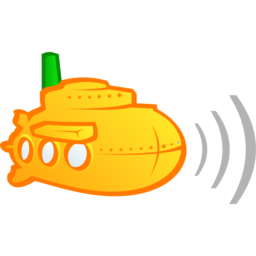The LinuxServer.io team brings you another container release featuring :-
- regular and timely application updates
- easy user mappings (PGID, PUID)
- custom base image with s6 overlay
- weekly base OS updates with common layers across the entire LinuxServer.io ecosystem to minimise space usage, down time and bandwidth
- regular security updates
Find us at:
- Discord - realtime support / chat with the community and the team.
- IRC - on freenode at
#linuxserver.io. Our primary support channel is Discord. - Blog - all the things you can do with our containers including How-To guides, opinions and much more!
THIS IMAGE IS DEPRECATED. PLEASE USE AIRSONIC linuxserver/airsonic Libresonic is a free, web-based media streamer, providing ubiqutious access to your music. Use it to share your music with friends, or to listen to your own music while at work. You can stream to multiple players simultaneously, for instance to one player in your kitchen and another in your living room.
Our images support multiple architectures such as x86-64, arm64 and armhf. We utilise the docker manifest for multi-platform awareness. More information is available from docker here and our announcement here.
Simply pulling linuxserver/libresonic should retrieve the correct image for your arch, but you can also pull specific arch images via tags.
The architectures supported by this image are:
| Architecture | Tag |
|---|---|
| x86-64 | amd64-latest |
| arm64 | arm64v8-latest |
| armhf | arm32v7-latest |
Here are some example snippets to help you get started creating a container.
docker create \
--name=libresonic \
-e PUID=1000 \
-e PGID=1000 \
-e TZ=Europe/London \
-e CONTEXT_PATH=<URL_BASE> `#optional` \
-p 4040:4040 \
-v </path/to/config>:/config \
-v </path/to/music>:/music \
-v </path/to/playlists>:/playlists \
-v </path/to/podcasts>:/podcasts \
-v </path/to/other media>:/media `#optional` \
--restart unless-stopped \
linuxserver/libresonic
Compatible with docker-compose v2 schemas.
---
version: "2"
services:
libresonic:
image: linuxserver/libresonic
container_name: libresonic
environment:
- PUID=1000
- PGID=1000
- TZ=Europe/London
- CONTEXT_PATH=<URL_BASE> #optional
volumes:
- </path/to/config>:/config
- </path/to/music>:/music
- </path/to/playlists>:/playlists
- </path/to/podcasts>:/podcasts
- </path/to/other media>:/media #optional
ports:
- 4040:4040
restart: unless-stopped
Container images are configured using parameters passed at runtime (such as those above). These parameters are separated by a colon and indicate <external>:<internal> respectively. For example, -p 8080:80 would expose port 80 from inside the container to be accessible from the host's IP on port 8080 outside the container.
| Parameter | Function |
|---|---|
-p 4040 |
WebUI |
-e PUID=1000 |
for UserID - see below for explanation |
-e PGID=1000 |
for GroupID - see below for explanation |
-e TZ=Europe/London |
Specify a timezone to use EG Europe/London. |
-e CONTEXT_PATH=<URL_BASE> |
For setting url-base in reverse proxy setups. |
-v /config |
Configuration file location. |
-v /music |
Location of music. |
-v /playlists |
Location for playlists to be saved to. |
-v /podcasts |
Location of podcasts. |
-v /media |
Location of other media. |
When using volumes (-v flags) permissions issues can arise between the host OS and the container, we avoid this issue by allowing you to specify the user PUID and group PGID.
Ensure any volume directories on the host are owned by the same user you specify and any permissions issues will vanish like magic.
In this instance PUID=1000 and PGID=1000, to find yours use id user as below:
$ id username
uid=1000(dockeruser) gid=1000(dockergroup) groups=1000(dockergroup)
Access WebUI at <your-ip>:4040.
Default user/pass is admin/admin
- Shell access whilst the container is running:
docker exec -it libresonic /bin/bash - To monitor the logs of the container in realtime:
docker logs -f libresonic - container version number
docker inspect -f '{{ index .Config.Labels "build_version" }}' libresonic
- image version number
docker inspect -f '{{ index .Config.Labels "build_version" }}' linuxserver/libresonic
Most of our images are static, versioned, and require an image update and container recreation to update the app inside. With some exceptions (ie. nextcloud, plex), we do not recommend or support updating apps inside the container. Please consult the Application Setup section above to see if it is recommended for the image.
Below are the instructions for updating containers:
- Update the image:
docker pull linuxserver/libresonic - Stop the running container:
docker stop libresonic - Delete the container:
docker rm libresonic - Recreate a new container with the same docker create parameters as instructed above (if mapped correctly to a host folder, your
/configfolder and settings will be preserved) - Start the new container:
docker start libresonic - You can also remove the old dangling images:
docker image prune
- Pull the latest image at its tag and replace it with the same env variables in one shot:
docker run --rm \ -v /var/run/docker.sock:/var/run/docker.sock taisun/updater \ --oneshot libresonic - You can also remove the old dangling images:
docker image prune
- Update all images:
docker-compose pull- or update a single image:
docker-compose pull libresonic
- or update a single image:
- Let compose update all containers as necessary:
docker-compose up -d- or update a single container:
docker-compose up -d libresonic
- or update a single container:
- You can also remove the old dangling images:
docker image prune
- 24.03.19: - Switching to new Base images, shift to arm32v7 tag.
- 15.01.19: - Pull war from github, adding pipeline multi arch builds.
- 05.01.19: - Linting fixes.
- 27.08.18: - Rebase to ubuntu bionic.
- 12.12.17: - Rebase to alpine 3.7.
- 11.07.17: - Rebase to alpine 3.6.
- 12.05.17: - Add annotation timeout (primarily for armhf and lower powered hosts).
- 08.02.17: - Rebase to alpine 3.5.
- 04.12.16: - Update jetty runner version.
- 29.11.16: - Switch to building from release tags following v6.1 stable release.
- 17.11.16: - Initial Release.






